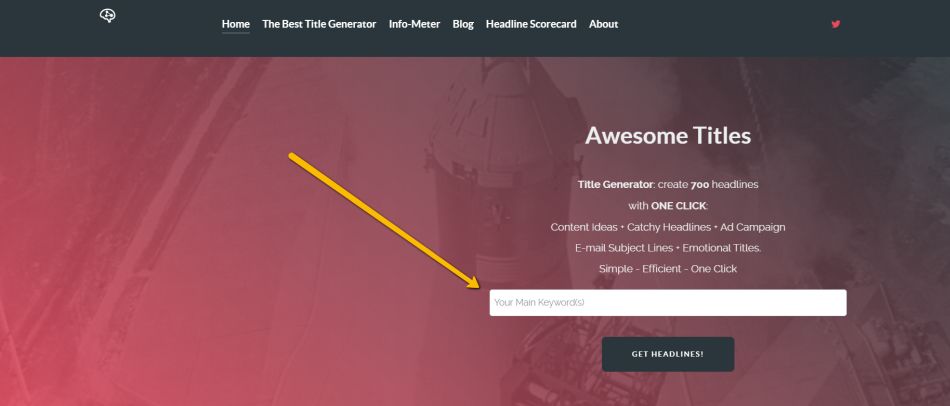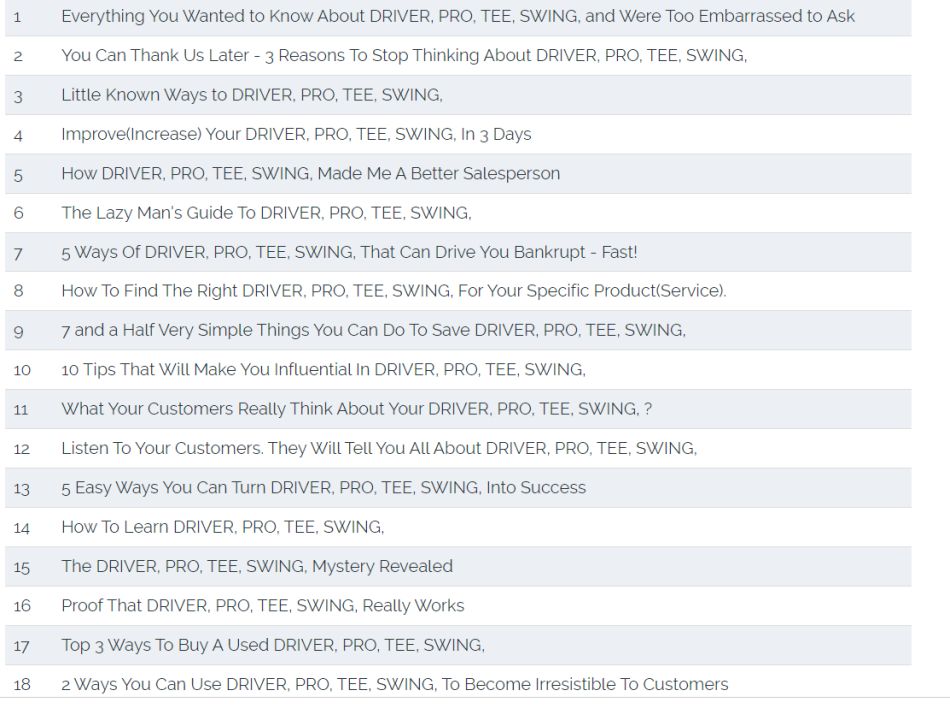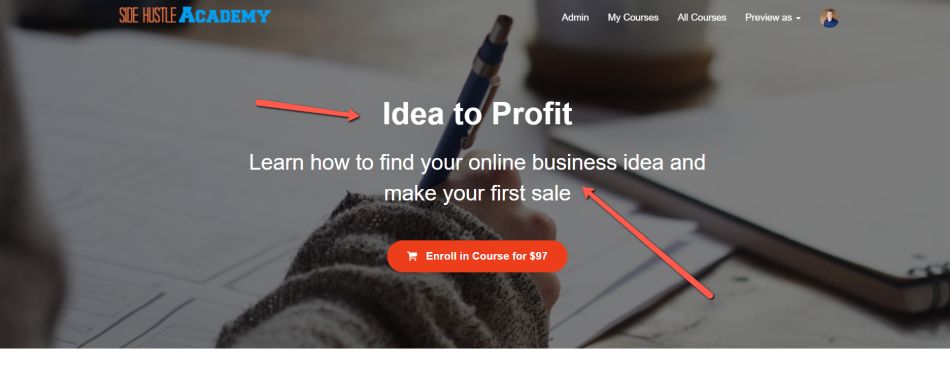
Having trouble coming up with a name for your online course? A good course name is one that describes your course and makes people think that its the course I need to help me solve my problem. Naming your course correctly is one of the most important things in the entire process but the question is how do you do it effectively?
So how do you name your online course? There are 3 basic steps to naming your online course. First, determine who your course is for and who it is not. Second, determine the outcome students want to achieve with this course, and finally, develop a title that speaks to the person and the outcome.
Obviously that’s just a basic method to help you come up with a name for your course. In the rest of this article, I’ll go in-depth on how to do each of these steps and come of the name of your course that will help you get more sales.
How to Name Your Online Course
When it comes to naming your online course it needs to be direct, speak directly to the person you’re trying to attract and repel the people that are not meant to take the course you’re selling.
Below are the steps to creating a name for your course.
#1 Who Is Your Course for and Who Is It Not
The first question you need to answer is who your courses is for and who should not take your course. The reason you need to know this is because it will help you determine who you should be marketing it to.
For example, if you are marketing a course on hitting golf balls with your driver but you’re trying to sell it to all golfers you’ll less likely to make any sales because you didn’t target your audience correctly.
On top of that this will help you narrow down your audience to a more specific group of people which will be easier to market towards versus marketing to the entire golf topic.
Finally, doing this will help you repel the people who are not meant to take your course. You might be thinking that you want everyone to buy your course but really you want the right people to buy your course.
For example, if your course is attracting golf beginners trying to tee off correctly you don’t want to market to advanced golfers looking to improve their putting game. This will only create confusion in your market but also a lot of refunds.
So how do we determine the type of people we are attracting and not?
Exercise: Create a two column chart on a piece of notebook paper. On the left side list who your course is for. On the right side list who your course is not for. Below is an example of the golf niche I’m using.
| Who Your Course is For | Who Your Course is Not For |
| New to the game of golf | Advanced Golfers |
| Learning how to drive off correctly | No putting or chipping |
| Need help choosing a good driver | Not using irons or wedges |
So take a moment and do this exercise now.
#2 What Is the Outcome and Symptoms
Next you need to figure out the outcome your course will solve and the symptoms leading up to that outcome, but first lets define exactly what an outcome is and what a symptom are.
A course outcome is a result that your student will get when they take your course. For example, in our golf example, the outcome is for beginners to tee off correctly.
A symptom is a kind of like a clue that helps you lead up to that outcome. For example every time they step up to the tee box they always seem to slice the ball or top it.
Knowing these things is vital to finding the right students for your course. A lot of times your student will know the symptoms of their problem but are not totally sure how to fix it or know what the outcome is.
That’s where you come in. Your job is to share what those symptoms are and tell them the outcome. The question is how do you figure out these symptoms?
The best way I’ve found to discovering your niche markets symptoms is to either talk to the people in this market or if you’ve already experienced this issue you can use the things you’ve already learned about this topic.
Exercise: Write down the outcome you want your student to achieve in your course. Be direct and specific. Next, write down the symptoms your students are dealing with.
Below is an example to help you out.
Outcome: How to Tee Off Correctly as a Beginner
Symptoms:
- Slicing the ball
- Topping the ball
- Not holding the club correctly
- Wrong stance and footing
- Ball tee too high
So take a moment now write down your course outcome and symptoms.
Side Note: This information will also come in handy when you create your course sales page.
#3 Develop a Title For Your Course
Now that you have the basic information together we can start put to put together some possible course title ideas. To do this we can look at what you’ve written down so far and list out some words that are associated with your course topic and outcome.
Here are few that I noticed.
- Golf Club
- Drive
- Tee off
- Slice
- Stance
- Beginner
- Topping
This list of words will help you determine some kind of idea you can name your course and subtitle.
Course Title Idea: Tee Off Like a Pro
Subtitle: How to Tee Off Like a Pro Even If Your New to Golf
I chose this title because Tee Off is what my students are learning and pro is what my students want to be more like.
However you’ll also want to create a subtitle for your course as well. The subtitle gives your course a little more depth by telling people exactly who your course is for.
Exercise: Now it’s your turn. Create a title and subtitle for your course. Keep your title short and sweet and your subtitle should be a one sentence description of your course.
If you’re having a little trouble coming up with a title try this free tool called Headline Generator. This tool works great fro coming up with blog post titles, email titles, and even course titles.
To use this tool simply input a few of your keyword ideas and hit Get Headlines.

Inside you’ll get all kinds of title ideas to work with. Below is a few of the ideas I got when I typed in my golfing keywords.

3 Tip to Naming Your Course Correctly
Now that you have a few course titles and subtitles put together here are a few tips to help you make it even better.
#1 Don’t Label Your Course as Basic or Beginner
The first tip to naming your online course is to never name it as the basics, or beginner course. The reason for this because when it comes to a beginners or basics you it makes people think of content they could find on YouTube, podcast, or a blog post.
Instead, you want this course to be the secret tips that no one else is telling you. This communicates that you have information that no one else does.
So when you create your course title make sure it isn’t basic but rather the culmination of your best content and tips that you’ve never shared.
#2 Be Specific
Next, make sure your title is specific. Often times I see a lot of people create the complete course on xyz that tries to teach everything they know about a specific topic and you don’t want to create that course.
Being to general of will actually drive students away from your course because they won’t know if you’ll cover the information they need.
Instead do as I showed in this article be as specific as possible.
#3 Keep Your Course Title Short
Finally, you’ll want to keep your course title short and sweet. You don’t want your course title to be how to drive off a tee box with courage and always make the ball go where you want it.
This title is way to long. Keep your title short like I’ve shown and use the subtitle section to give a more precise answer.
Another good example of this is my course Idea to Profit. The title of this course is coming up with an idea for an online business and making your first sale with it.
The subtitle for that course is Learn How to Find Your Online Business Idea and Make Your First Sale

What if My Course Title Doesn’t Work
As I’m wrapping up you might be thinking what if my title doesn’t work? To be truthful their is no way to know if a title will or won’t work. However the best way to figure this out is to test it.
The great thing about creating a title is that you can always change it if you need to. If you find that the title you’ve created isn’t working with your audience then create a different one and test it.
Next, give each title at least 2 to 3 months to see how it does. You want to have a enough sales come through to make a good decision. The more sales you get better your decision will be.
Whatever you do don’t change titles every week or even every day. Just let it go and see how it does.
Remember that the title is an important part of your course but also know that their are a lot of other things at play here as well.
The most important thing here is to just keep moving and get your course done because even if you have a great course title but your course isn’t finished yet then it doesn’t mean anything.


